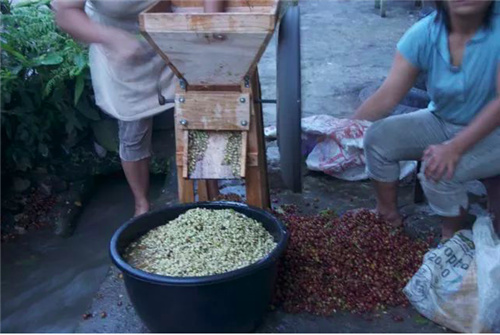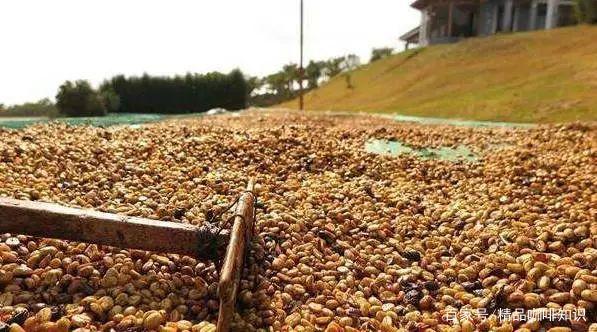What is the difference between wet planing coffee beans and semi-sun treatment coffee beans? What are the characteristics of wet planing coffee beans?
Wet planing coffee beans is a treatment of Indonesian coffee. Here is a brief introduction to the specific process of wet planing: the farmers first pick the ripe coffee fruit and put it in the sink to remove sundries and immature coffee fruit by flotation. Then use a peeling machine to remove the pulp and peel, retain the endocarp and pectin, and decompose the pectin after brief fermentation. The washed raw coffee beans are dried so that the water content of the raw coffee beans is reduced to 20% Mel 24%. Then the endocarp is removed by the machine, and the coffee beans without endocarp are dried again to reduce their water content to about 12-13%, and the treatment is completed.

Half-sun treatment is commonly used in Brazil.
1. First put the coffee fruit into a large water tank, remove the floating fruit, and then put the sunken fruit into the pulp sieving machine to remove the pulp. To better remove the immature fruit, it is more important to let the coffee beans dry in the sun no longer with pulp, but only wrapped in a layer of pectin, which is more helpful to control the subsequent fermentation process.
two。 After the peel and pulp of the fruit is removed, you can see the yellow pectin, and the coffee fruit with pectin will be exposed to the sun (after the pulp of the coffee bean is removed, there will be a layer of sticky jelly called pectin. )
3. The water content of dried beans reached 10.5% Murray 12% to be shelled.
4. Finally, polishing and polishing are carried out before the beans are bagged and exported.

"horseshoe beans" caused by wet planing in Indonesia
Wet planing will cause "defects" in coffee beans. This is because when wet planing is used to remove parchment, the water content of coffee is still as high as 20-24%. In general, the water content of coffee is reduced to 10-12% before shelling. In the "semi-dry" state, parchment will adhere to the surface of raw beans, removing parchment is more difficult than "fully dry", and the shelling process requires more friction.
But on the other hand, "semi-dry" raw coffee beans are very fragile at this time, far less hard than "fully dry" raw beans, so beans are more likely to be squeezed and form a small gap.
Important Notice :
前街咖啡 FrontStreet Coffee has moved to new addredd:
FrontStreet Coffee Address: 315,Donghua East Road,GuangZhou
Tel:020 38364473
- Prev

The difference between extraction rate and concentration of hand-brewed coffee how to make hand-ground coffee?
Buddy: "my hand-brewed coffee smells rich in aroma, but it always feels like something's wrong!" It's not uncomfortable to drink, you have all the sweet and sour feelings you should have, but you just feel something missing. Qianjie: do you feel that there is no sense of hierarchy and that the taste of coffee is very general? Buddy: yes.
- Next

How much is the SCA barista certificate to test the SCA barista system? can SCA baristas go to Starbucks?
How much is the SCA tuition? In general, the common combination in China is the connection of single-module primary and intermediate courses, with fees ranging from 7000 to 9000; advanced courses are generally not available, and if open, they are also in the credit certification system of SCA at or above 10,000 yuan. The SCA coffee diploma system is divided into six modules: Intro.
Related
- Beginners will see the "Coffee pull flower" guide!
- What is the difference between ice blog purified milk and ordinary milk coffee?
- Why is the Philippines the largest producer of crops in Liberia?
- For coffee extraction, should the fine powder be retained?
- How does extracted espresso fill pressed powder? How much strength does it take to press the powder?
- How to make jasmine cold extract coffee? Is the jasmine + latte good?
- Will this little toy really make the coffee taste better? How does Lily Drip affect coffee extraction?
- Will the action of slapping the filter cup also affect coffee extraction?
- What's the difference between powder-to-water ratio and powder-to-liquid ratio?
- What is the Ethiopian local species? What does it have to do with Heirloom native species?

